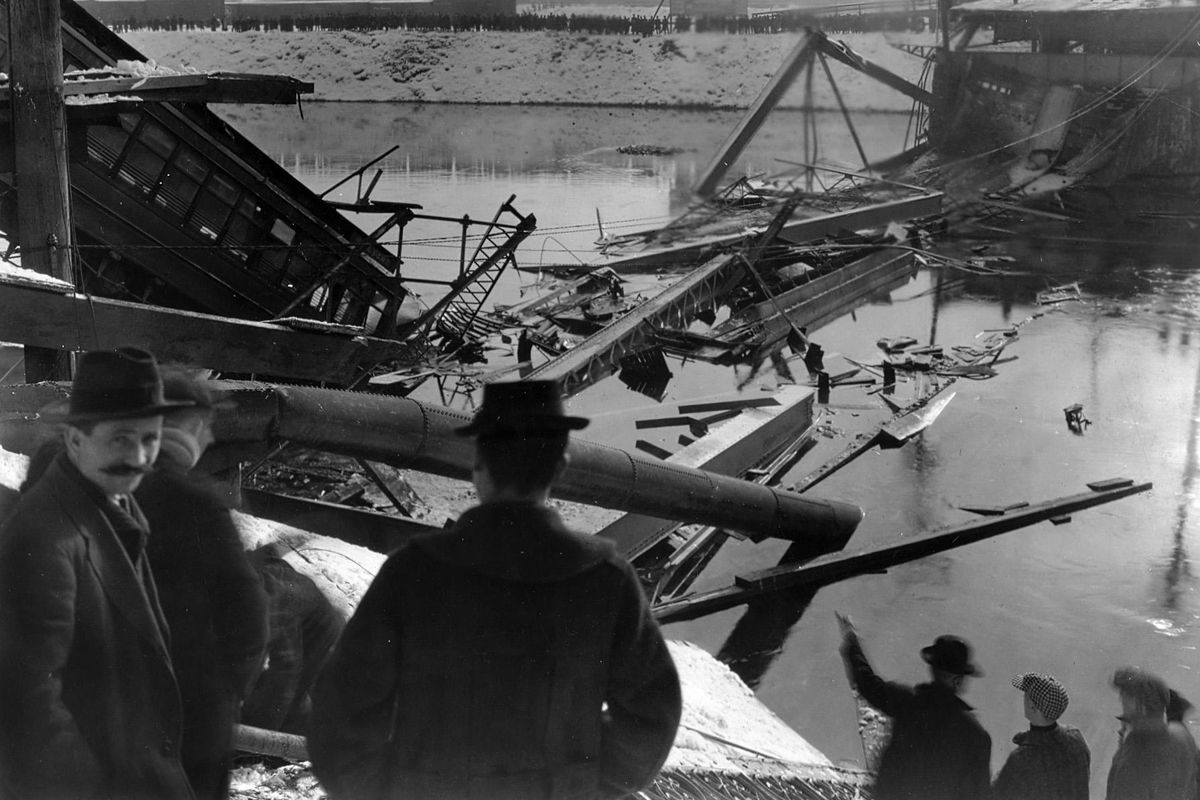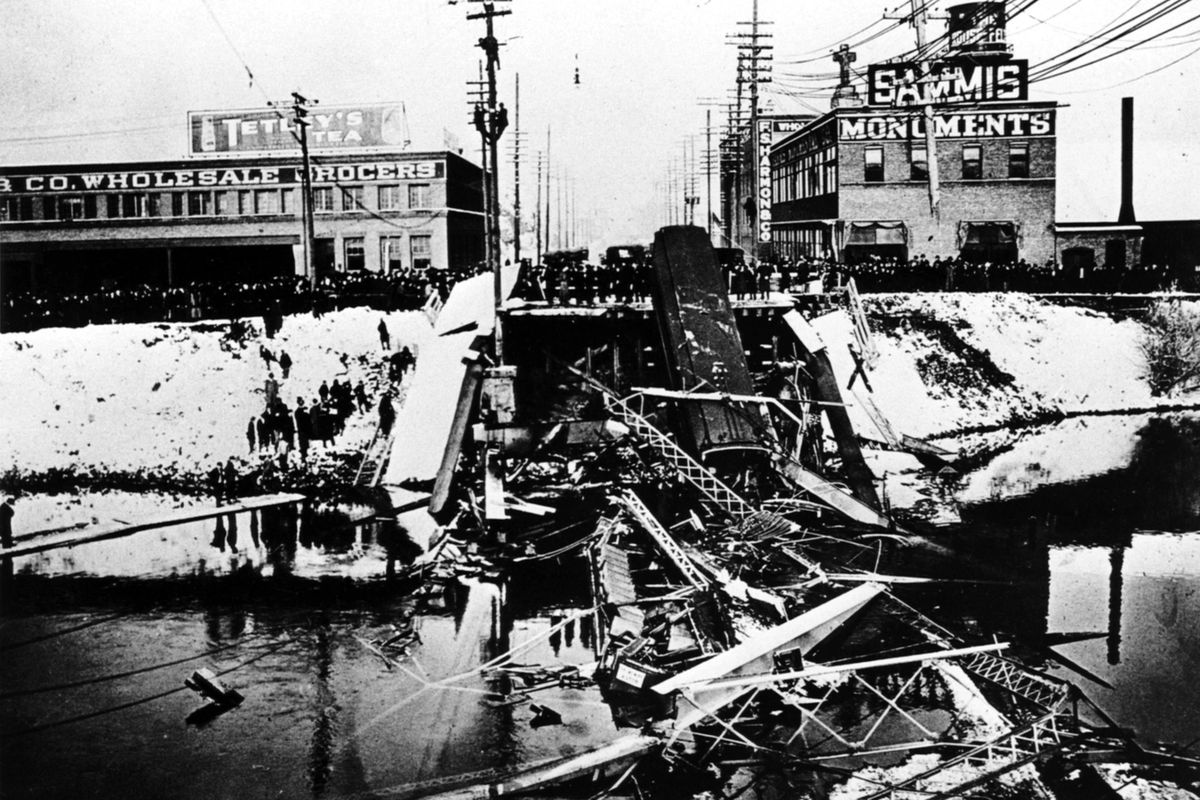Division Street bridge collapse in 1915 killed five, injured 12
Two streetcars plunged into the Spokane River on Dec. 18, 1915, when the Division Street bridge collapsed. Five men died and 12 were injured. (Photo Archive/The Spokesman-Review)
City officials denied they were to blame when Spokane’s Division Street bridge suddenly collapsed into the water on a cold December morning in 1915.
But with five men dead, 12 injured and neighborhoods cut off from their supply of electricity, water and gas, the denials rang hollow; the young city by the river had to take better care of its bridges.
Contemplating the twisted girders that had collapsed beneath the load of two streetcars, Spokane’s early engineers decided to switch the city’s bridges from steel to reinforced concrete.
No one then could foresee a time when rebar would rust and concrete would crumble beneath 21st-century rivers of automobiles, trucks and trains.
That 1915 disaster, one of Spokane’s worst, struck at 6:12 a.m. on Dec. 18. As two streetcars rolled onto the bridge, steel girders ripped from anchors on the river’s bank. “Everything went dark, and it felt as if we were falling forever. The car went under the water and it was deathly still,” a streetcar conductor later told The Spokane Daily Chronicle.
A heavy steel beam smashed one of the streetcars, crushing those inside. Blocks away, people heard the screams of struggling men. Live electrical wires, torn by the collapse, sparked in the early morning fog. Clouds of gas and a torrent of water gushed from broken pipes fastened to the bridge. The big pipes took utilities across the river and on to the city’s neighborhoods – a technique still used today, a century later.
Firefighters raced to the scene and wrestled with ropes, ladders, axes and poles to rescue victims from the tangled, underwater wreckage. A row of early-day automobiles lined up along the river’s bank. One by one, they rattled away to the hospital, ferrying the broken bodies of the injured and the dead.
The dead included two owners of saloons, a mill engineer, a carpenter and an African-American porter who worked at the Crescent department store. All left widows and children.
Afterward, two city officials “asserted that the city has always given careful attention to the bridge,” The Spokesman-Review reported. But within months, the newspaper’s editorial page declared that “steel bridges are in the past … we are in the age of concrete.” Three years later, a new concrete span began to carry Division Street’s traffic into a future where engineers on occasion would ask: Does history ever repeat itself?

